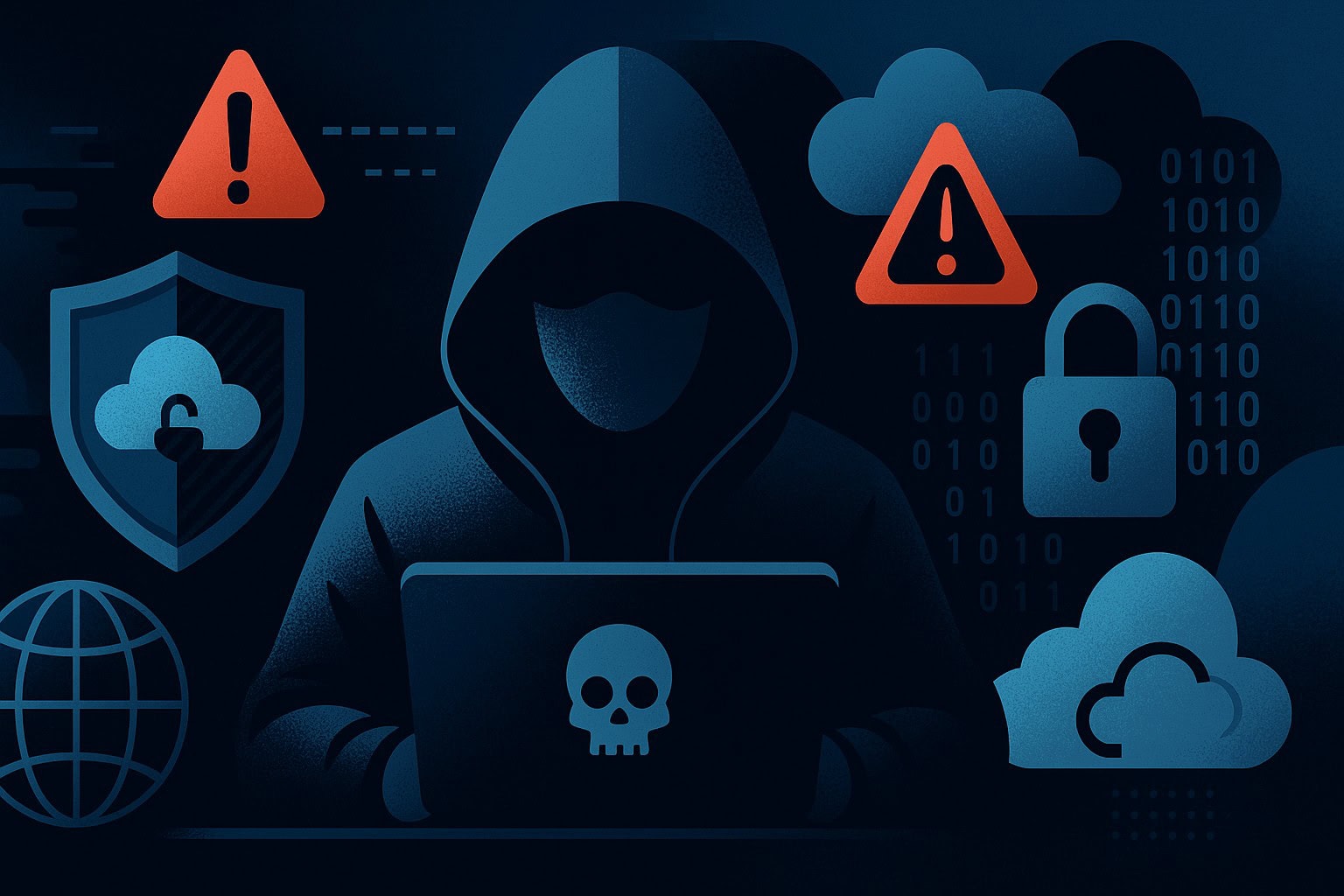
The Asia-Pacific (APAC) region is grappling with a significant rise in ransomware attacks targeting enterprises, with threat actors leveraging increasingly sophisticated and automated tactics.
Recent analyses from firms like Barracuda and Verizon paint a picture of an evolving threat landscape where vulnerabilities in VPN infrastructure and Microsoft 365 environments are being exploited with unprecedented speed.
Key Attack Vectors and Actor Tactics
According to a Barracuda report[1], ransomware groups, including the prolific Akira, are actively exploiting vulnerabilities such as CVE-2024-40766 in SonicWall VPN devices. Attackers bypass multi-factor authentication (MFA) by leveraging previously stolen credentials and intercepting one-time passwords (OTPs), a strategy that remains effective due to failure in patching and credential management. Attackers typically follow a rapid, multi-stage process:
- Initial Access: Penetrating networks through unpatched VPNs or compromised credentials.
- Lateral Movement: Using automated Python scripts and legitimate tools to move stealthily across the network.
- Endpoint Evasion: Employing techniques like disabling endpoint protection and event tracing to avoid detection.
Data Theft: Exfiltrating sensitive information for double and triple extortion schemes. - Ransomware Deployment: Encrypting systems for financial gain.
Critical Infrastructure and Digital Ecosystems at Risk
The prevalence of Microsoft 365 in the APAC region presents another significant attack surface. Compromised credentials offer a direct pathway into organizations’ entire networks, allowing attackers to target high-privilege accounts for access to email, SharePoint, and other critical services.
A 2024 report by India’s Ministry of Electronics & Information Technology noted that ransomware incidents in India alone increased by 53% in a single year, highlighting the escalating threat.
Across the region, key sectors like manufacturing, telecommunications, finance, and critical infrastructure are frequently targeted. Countries such as Thailand, Japan, Singapore, India, and the Philippines have been particularly affected. A 2025 Verizon report indicated that ransomware accounted for more than half of data breaches in APAC, with social engineering incidents increasing by 53% year-over-year.
In Pakistan specifically, ransomware has struck critical infrastructure and government entities multiple times between 2020 and 2025, with at least 27 documented victims across sectors[2] including energy, finance, government, manufacturing, and healthcare. Notable incidents include:
In September 2020, K-Electric, Pakistan’s largest power supplier serving over 20 million customers in Karachi, was hit by NetWalker ransomware, disrupting billing and online services while demanding a $3.85 million ransom (later increased to $7.7 million).
In October 2021, the National Bank of Pakistan suffered a major cyber attack that disrupted ATM and online banking services, with reports indicating ransomware involvement that led to temporary system outages and heightened concerns over financial data security.
Throughout 2022-2023, attacks escalated against key institutions: Adamjee Insurance was targeted by LockBit 3.0 in December 2022; the Institute of Space Technology fell to Medusa in March 2023; National Institutional Facilitation Technologies (a key payment processor) was hit by ALPHV/BlackCat in July 2023, exposing sensitive financial data; and EFU Life Assurance was attacked by IncRansom in November 2023.
In 2024, multiple high-profile breaches occurred, including the Army Welfare Trust (RansomHouse, April); Al-Karam Textile Mills (RansomHouse, July); KMLG logistics (Qilin, July); and FF Steel manufacturing (Sarcoma, December), alongside government sites like pbos.gov.pk (Funksec, December).
2025 saw a surge, with over a dozen incidents: Punjab government portals (punjab.gov.pk by Flocker and Funksec in January); WAPDA (wapda.gov.pk by Babuk2 in March); NADRA (nadra.gov.pk by Babuk2 in March), compromising national identity data; Kasb Bank/K-Trade (Hunters in April); Jubilee Life Insurance (Warlock in September); and Greenstar Social Marketing (Qilin in October).
Additionally, in August 2025, Pakistan Petroleum Limited (PPL), a major state-owned oil and gas firm supplying 20% of the nation’s natural gas, was targeted by Blue Locker ransomware (a variant of Proton/Shinra malware), prompting national warnings from the National Cyber Emergency Response Team (NCERT) about severe risks to Windows systems, network shares, and critical infrastructure. While PPL activated protocols to mitigate disruption, the incident highlighted vulnerabilities in the energy sector amid broader reports of 40 million cyberattacks on Pakistan’s infrastructure in 2024 alone.
Multi-Extortion and Geopolitical Motives
Modern ransomware attacks in APAC have moved beyond simple encryption. Many now involve double or triple extortion, where attackers steal data, encrypt it, and then threaten to publish the stolen information, and even engage in Distributed Denial of Service (DDoS) attacks, creating full-scale business crises.
Analysis from cybersecurity firms suggest that ransomware is no longer just a financial crime but a broader cyber-economic issue, driven by motives ranging from direct ransom demands to intellectual property theft and supply-chain disruption. The region’s rapid digitization and legacy IT infrastructure make it a fertile ground for these attacks.
Bolstering Defenses: A Call to Action
Cybersecurity experts urge APAC organizations to adopt a layered defense strategy to bolster resilience:
Patch Management: Urgently patch critical VPN vulnerabilities, such as the SonicWall flaw (CVE-2024-40766), and ensure credentials are reset after patching.
- Strengthen MFA: Implement phishing-resistant MFA, like FIDO2 keys, instead of relying on susceptible OTPs.
- Secure Credentials: Conduct regular account audits, enforce credential hygiene, and monitor for unusual login activity.
- Advanced Endpoint Protection: Deploy advanced Endpoint Detection and Response (EDR) tools capable of detecting malicious Python scripts and other automated frameworks.
- Zero Trust Architecture: Implement a zero-trust model with micro-segmentation to limit lateral movement and contain breaches.
References
- ^ Barracuda report (blog.barracuda.com)
- ^ 27 documented victims across sectors (www.ransomware.live)
